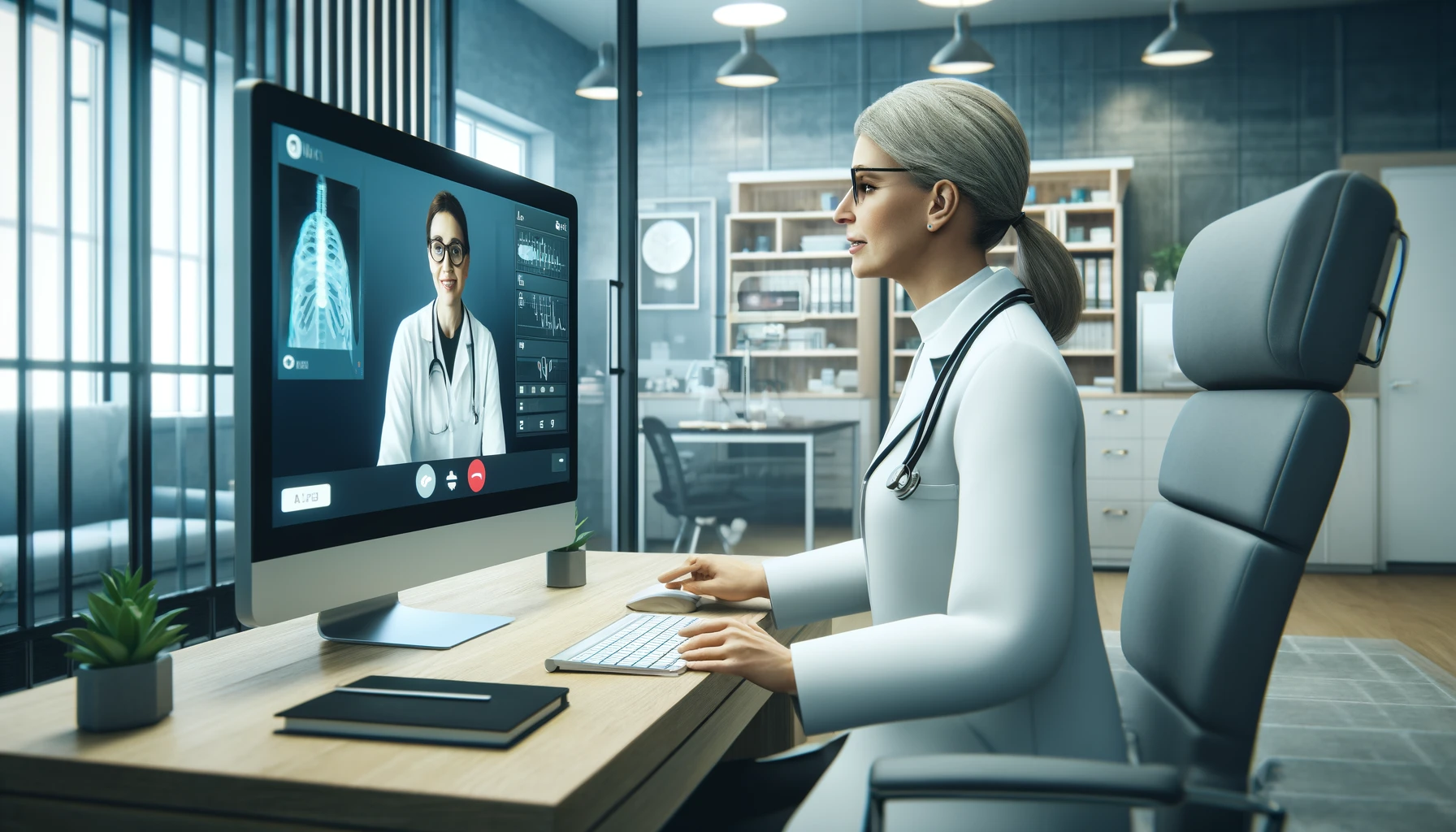Technological Advancements Shaping Telemedicine
Integration of Wearable Devices
Wearable technology has become a cornerstone of modern telemedicine frameworks. Devices such as smartwatches and fitness trackers are now integral in chronic disease management and preventive healthcare. These devices continuously gather health data which can be monitored remotely by healthcare providers, offering insights into a patient's real-time health status. This ongoing monitoring facilitates early detection of potential health issues, allowing for timely interventions that can prevent complications.
Leveraging AI and Machine Learning
Artificial Intelligence (AI) and Machine Learning (ML) are revolutionizing telemedicine by enhancing diagnostic accuracy, personalizing treatment plans, and streamlining administrative processes. AI algorithms are adept at analyzing vast amounts of medical data quickly, identifying patterns that may not be immediately obvious to human doctors.
The Role of Virtual and Augmented Reality
Virtual Reality (VR) and Augmented Reality (AR) improve the training of healthcare professionals and enhance patient-physician interactions during remote consultations. VR can simulate real-life surgical procedures for training purposes, while AR can overlay digital information onto a clinician’s field of view, enriching the context of patient assessments. These technologies are particularly promising in fields like surgery, where precision and detailed anatomical knowledge are paramount.
Enhancing Security with Advanced Communication Platforms
As telemedicine involves the transmission of sensitive patient data, ensuring the security and privacy of this information is paramount. Advancements in secure communication technologies that comply with regulations, e.g., HIPAA (Health Insurance Portability and Accountability Act) in the U.S. are critical. These platforms not only safeguard patient data but also ensure that communications between patients and healthcare providers are confidential and protected from unauthorized access.

Benefits of Telemedicine in Modern Healthcare
Expanding Access to Quality Healthcare
One of the most significant advantages of telemedicine is its ability to provide widespread access to quality medical care. This is particularly vital for individuals in remote or rural areas where medical facilities may be scarce or nonexistent. Telemedicine bridges these gaps, ensuring that every patient, regardless of their location, has access to specialized medical consultations and ongoing care. This democratization of healthcare helps to alleviate the disparities in health services available to urban versus rural populations.
Enhancing Patient Engagement and Satisfaction
Telemedicine also plays a crucial role in enhancing patient engagement by empowering individuals to take an active role in their health management. With easy access to healthcare providers and real-time health monitoring, patients are more likely to stay engaged in their treatment processes and comply with prescribed health regimes. This heightened engagement often leads to better overall health outcomes and higher patient satisfaction, as individuals feel more in control of their health decisions.
Cost Efficiency in Healthcare Delivery
The economic benefits of telemedicine cannot be overlooked. By reducing the necessity for in-person visits, telemedicine decreases transportation costs and saves time for both patients and healthcare providers. Additionally, it can significantly cut down on the overhead costs associated with managing a physical clinic, such as utilities and staffing. These savings can then be redirected to enhance other aspects of patient care, making healthcare more affordable and efficient.
Chronic Disease Management through Telemedicine
Chronic disease management is another area where telemedicine has had a transformative impact. Continuous remote monitoring and regular virtual check-ups enable healthcare providers to manage chronic conditions more effectively. Patients with diabetes, hypertension, and other long-term health issues can receive timely advice and adjustments to their treatment plans, reducing hospital visits and preventing severe health crises. This proactive approach not only improves the quality of life for patients but also contributes to the sustainability of healthcare systems by curbing the costs associated with managing chronic conditions.
The Future of Telemedicine: Emerging Trends and Innovations
As we look to the future, several trends and innovations are poised to further enhance the capabilities and reach of telemedicine.
Integration with Electronic Health Records (EHRs)
The integration of telemedicine platforms with Electronic Health Records (EHRs) is a critical trend that is gaining momentum. This seamless connectivity allows healthcare providers to access a patient’s complete medical history in real-time during a telemedicine session, ensuring that the care delivered is informed and comprehensive. Furthermore, updates to a patient's health status can be directly recorded, maintaining continuity and accuracy in medical records.
Expansion Beyond Conventional Consultations
The scope of telemedicine is expanding beyond traditional diagnostic consultations. Telemedicine now encompasses a broad spectrum of healthcare services, including mental health therapy, post-operative follow-ups, physical therapy, and more. This expansion is not only making specialized care more accessible but is also enhancing the capacity of healthcare systems to cater to diverse patient needs efficiently.
Advances in Diagnostic and Monitoring Technologies
The ongoing development of advanced diagnostic tools and remote monitoring technologies is set to revolutionize telemedicine further. Innovations such as remote stethoscopes, wearable health monitors, and digital imaging tools are enhancing the diagnostic capabilities available through telemedicine. These tools enable doctors to perform comprehensive assessments remotely, ensuring that telemedicine consultations are as effective as in-person visits.
Regulatory and Reimbursement Landscape
As telemedicine becomes more integrated into healthcare systems, regulatory and reimbursement frameworks are evolving to support its adoption. Improved policies that recognize the legitimacy and necessity of telemedicine services are being developed, ensuring providers are adequately compensated and standards of care are maintained. This regulatory support is crucial for the sustained growth and acceptance of telemedicine across the healthcare industry.
The Future of Telemedicine for a Healthier Tomorrow
The journey of telemedicine from a novel concept to a fundamental component of modern healthcare has been remarkable. As we have explored, the benefits and advancements of telemedicine not only address current healthcare challenges but also offer a vision of a more accessible, efficient, and patient-centered future. As this technology continues to evolve and integrate deeper into healthcare systems, its potential to transform care delivery is limitless.
Reinventing Patient Care
The future of telemedicine promises a radical transformation in patient care. With technologies such as AI, wearable devices, and AR/VR becoming more sophisticated, the way healthcare providers interact with patients, diagnose conditions, and manage treatments is continually improving. These advancements ensure that every patient interaction is informed, precise, and tailored to individual needs, thus enhancing the effectiveness of medical interventions and patient outcomes.
Global Impact on Healthcare Systems
Globally, telemedicine is set to play a pivotal role in overcoming healthcare barriers. It has the potential to significantly reduce the strain on hospital systems by handling routine consultations online, freeing up valuable resources for acute and critical care. Furthermore, by providing reliable healthcare services in remote and underserved regions, telemedicine can achieve unprecedented levels of equity in healthcare access worldwide.
Fostering Innovation and Collaboration
The expansion of telemedicine encourages innovation and collaboration across various sectors, including technology developers, healthcare providers, and policy makers. This collaborative environment not only accelerates the pace of healthcare innovation but also ensures that the benefits of telemedicine reach all corners of society. It prompts a reevaluation of traditional healthcare models and encourages the adoption of more dynamic, integrated, and patient-focused systems.

The Role of Policy and Regulation
For telemedicine to realize its full potential, supportive policies and regulatory frameworks are essential. Policymakers must continue to adapt and revise regulations to keep pace with technological advancements, ensuring that telemedicine services are both effective and secure. Additionally, healthcare insurers and providers must work together to establish fair and sustainable models for telemedicine reimbursement, which will be crucial for its long-term integration and success.
Final Thoughts
As we move forward, the importance of telemedicine in shaping the future of healthcare cannot be overstated. By embracing these technological advancements, the healthcare sector can deliver services that are not only more accessible and cost-effective but also of higher quality and responsiveness to patient needs. The ongoing development and integration of telemedicine will undoubtedly enhance the well-being of individuals and communities around the globe, marking a new era in healthcare that is innovative, inclusive, and interconnected.
The future of telemedicine is bright, and as it continues to evolve, so too will our ability to meet the changing needs of patients and the challenges of healthcare delivery. At HealthScreen, we remain committed to providing up-to-date information and insights on the latest advancements in medical technology, empowering both healthcare professionals and patients to navigate the evolving landscape of telemedicine.